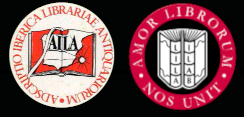


Home |
Temáticas |
Catálogos |
Pedidos |
  |  |
|||||||
|

|
RUGENDAS. (Johann Moritz) HABITANTE DE GOYAS, QUADRO A ÓLEO PINTADO SOBRE MADEIRA. |
|
|
Clique nas imagens para aumentar. REDEL. (August Casimir) ELOGIA MARIANA.Olim à A. C. Redelio Belg: Mechl: S. C. M. L. P. concepta Nunc devotae Meditationi fidelium ad augmentum cultus Bmae MARIAE VIRG: DEIPARAE Inventa et delineata per Thomam Scheffler, et aeri incisa à Martino Engelbrecht Chalcographo Augustano. Cum Priv. Sac. Caes. Mai. Aº. 1732. In 4º pequeno de 14,8x9,9 cm. Com 59 fólios. Encadernação da época inteira de pele com nervos e ferros a ouro na lombada. Profusamente ilustrado com 59 belas gravuras, abertas em chapa de metal, na frente das folhas que têm o verso em branco. Exemplar com pequenas manchas à cabeça e no pé de algumas páginas, com uma assinatura de posse coeva na folha de guarda posterior e com desgaste nos cantos e nas charneiras da encadernação, com pequena perda de pele por cima do primeiro nervo. Magnífico e muito raro livro de emblemas em louvor da Virgem Maria. Cada gravura, com representações muito elaboradas de passos da vida de Nossa Senhora, relativas às suas invocações e ao seu poder de intercessão perante Deus, apresenta uma legenda e uma explicação em dois dísticos em latim (4 versos). Obra que se destinava a ensinar pela combinação da imagem, da poesia e das legendas a doutrina da Igreja Católica no período da vigência do pensamento da reforma católica posterior ao Concílio de Trento. Por isso, esta notável obra é de grande importância para estudar a relevância da imagem, reforçada por legendas e poesias, como instrumento didáctico de grande poder, com o desejo de criar uma consciência colectiva e globalizadora que concretizava a missão apostólica e de evangelização contida na palavra de Jesus Cristo. Por outro lado é essencial para o estudo do desenvolvimento das técnicas da gravura, da impressão e da divulgação das ideias nas sociedades do Antigo Regime. A primeira gravura é o frontispício que tem o título enquadrado por volutas, com flores, encimadas por um retrato da Virgem Maria, com resplendor constituído por segunda gravura, dividida em dois planos, apresenta no plano superior a Anunciação a Maria em belíssima composição e no plano inferior a casa de Maria com as paredes cobertas pelas diversas invocações do seu nome, pelas palavras do anjo na Anunciação e citações marianas da Bíblia. As gravuras 3 a 11 representam a Virgem Maria com Jesus, com legendas de carácter penitencial - Senhor tende piedade de nós! Cristo tende piedade de nós. Seguem-se 44 gravuras, da folha 12 a 55, cada uma com uma das invocações de Maria, entre outras: Mãe de Deus, Rainha dos Anjos, Espelho da Justiça, Torre de David, Arca da Fé. Estas 44 gravuras incluem, além das composições em quatro versos latinos comuns a todas as gravuras, anagramas construídos com as letras das legendas com as invocações de Maria. As gravuras nº 56 a 58 representam Cristo - o Cordeiro de Deus, em cenas da Paixão, Ressurreição, Última Ceia e em glória no Céu, com legendas pedindo a sua misericórdia. Na última gravura o autor pede à Virgem Maria que o torne digno de a cantar. August Casimir Redel (1656 - 1705) é autor de outro livro de emblemas dedicado ao Principe José Fernando, Eleitor da Baviera, que foi publicado em 1696. Martin Engelbrecht (Augsburg, 1684 - 1756) Gravador e impressor alemão com extensa e variada obra publicada no âmbito do estilo barroco do sul da Alemanha.
Binding: Full calf with raised bands and gilt tools on spine. Profusely illustrated with 59 beautiful engravings, open in metal plates, on the front of the sheets with blank verso. Copy with small stains on the head and tail of a few pages, with a contemporary ownership title on the back endpaper and wore corners and hinges of the binding; small loss of leather above the first raised band. Magnificent and very rare book of symbols in praise of the Virgin Mary. Each engraving, with very elaborate representations of stages in the life of Our Lady, related to her invocations and her power of intercession before God, presents a legend and an explanation in 4 Latin verses. A work intended to teach the doctrine of the Catholic Church through the combination of image, poetry and captions during the beginning of the Counter-Reformation after the Council of Trent. For this reason, this remarkable work is of great importance for studying the relevance of the image, reinforced by captions and poems, as a didactic instrument of great power, with the desire to create a collective and globalizing conscience that would fulfil the apostolic mission and evangelization contained in the word of Jesus Christ. It is also essential for the study of the development of engraving techniques, printing, and the dissemination of ideas in the societies of the Old Regime. The first engraving is the frontispiece framed by scrolls, with flowers, topped by a portrait of the Virgin Mary, with a resplendent second engraving, divided in two levels, presents the Annunciation to Mary in a beautiful composition on the upper level and the house of Mary on the lower level, with the walls covered by the various invocations of her name, the words of the angel at the Annunciation, and Marian quotations from the Bible. The pictures 3 to 11 represent the Virgin Mary with Jesus, with penitential captions “Lord have mercy on us! Christ have mercy on us!”. After there are 44 pictures, from sheet 12 to 55, each with one of Mary's invocations, among others: Mother of God, Queen of Angels, Mirror of Justice, Tower of David, Ark of Faith. These 44 pictures include anagrams built with the letters of the captions with the invocations of Mary, in addition to the compositions in four Latin verses common to all pictures. Prints 56 to 58 represent Christ - the Lamb of God, in scenes from the Passion, Resurrection, the Last Supper and in glory in heaven, with captions asking for his mercy. In the last picture the author asks the Virgin Mary to make him worthy to sing her. August Casimir Redel (1656 - 1705) is the author of another book of symbols dedicated to Prince Joseph Ferdinand of Bavaria, which was published in 1696. Martin Engelbrecht (Augsburg, 1684 - 1756) German engraver and printer with extensive and varied work published in the baroque style of southern Germany. Ref: Carmen López Calderón. Quién es quién en la 'Elogia Mariana' de A. C. Redelio. Barroco IberoAmericano; Identidades Culturais de un Imperio. Andavira. Santiago de Campostela, 2013. Servizio Bibliografico Nazionale. Catalogo IT/ICCU/VBAE/000727 e 010942. Referência: 2011PG099
Local: M-11-D-7 Caixa de sugestões A sua opinião é importante para nós. Se encontrou um preço incorrecto, um erro ou um problema técnico nesta página, por favor avise-nos. 
|
Pesquisa Simples




|
||
 |
|||
|